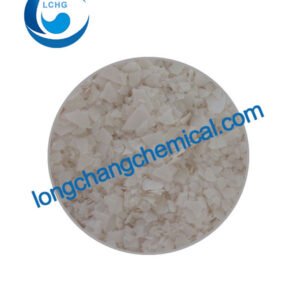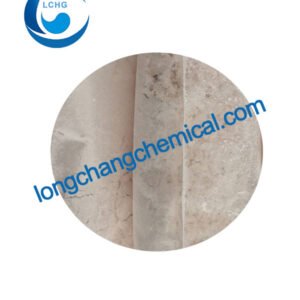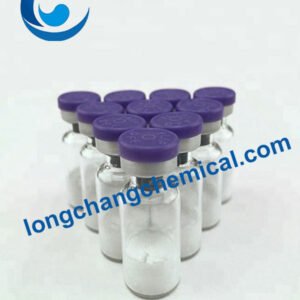Descripción
Propiedades típicas del Tween 85
| Apariencia |
Líquido aceitoso de color amarillo a ámbar. |
| Índice de acidez (mg KOH/g) |
≤2.0 |
| Índice de saponificación (mg KOH/g) |
83-98 |
| Índice de hidroxilo (mg KOH/g) |
40-60 |
| Agua (%) |
≤3.0% |
Uso del Tween 85
- Agente emulsionante: El Tween 85, con número CAS 9005-70-3, se utiliza comúnmente como agente emulsionante. Forma parte de la serie de tensioactivos Tween y es especialmente eficaz para formar emulsiones estables de aceite en agua.
- Formulaciones farmacéuticas: Este compuesto se utiliza en formulaciones farmacéuticas. Tween 85 puede incluirse en determinadas formulaciones farmacéuticas para mejorar la solubilidad y la biodisponibilidad, especialmente en el caso de fármacos poco solubles en agua.
- Industria alimentaria y de bebidas: El Tween 85 puede emplearse en la industria alimentaria y de bebidas. Se utiliza en determinadas formulaciones para mejorar la textura y la estabilidad de productos como los productos horneados y las bebidas emulsionadas.
- Productos cosméticos: En la industria cosmética, el Tween 85 se utiliza en determinadas formulaciones. Puede estar presente en productos para el cuidado de la piel y la higiene personal para ayudar a la emulsificación de los ingredientes y mejorar la estabilidad del producto.
Envasado y envío de Tween 85
Envasado: 25 kg/bidón, 50 kg/bidón, 200 kg/bidón
Almacenamiento de Tween 85
Almacenar en un lugar ventilado, alejado de ácidos, oxidantes y alimentos.
Gama de productos Tween
| Especificación |
Entre 20 y 30 años |
Entre 40 y 50 |
Entre 60 |
Entre 80 |
| CAS |
9005-64-5 |
9005-66-7 |
9005-67-8 |
9005-65-6 |
| Apariencia (25 ℃) |
Líquido viscoso de color ámbar. |
Sólido ceroso ligeramente amarillo. |
Sólido ceroso ligeramente amarillo. |
Aceite viscoso ámbar |
| Índice de hidroxilo (mgKOH/g) |
90~110 |
85~100 |
80~105 |
65~82 |
| Índice de saponificación (mgKOH/g) |
40~50 |
40~55 |
40~55 |
43~55 |
| Índice de acidez (mgKOH/g) |
≤2.0 |
≤2.0 |
≤2.0 |
≤2.0 |
| Humedad (%) |
≤3 |
≤3 |
≤3 |
≤3 |
| valor HLB |
16.5 |
15.5 |
14.5 |
15 |
| Gravedad específica |
1.08~1.13 |
1.05~1.10 |
1.05~1.10 |
1.06~1.09 |
| Especificaciones |
Rendimiento y especificaciones |
| T-20 |
1、Es fácilmente soluble en agua, metanol, etanol, isopropanol y otros disolventes, insoluble en aceites móviles y minerales, con propiedades de emulsificación, difusión, solubilización y estabilización, entre otras. |
| 2. Este producto es inocuo para el cuerpo humano, no irrita y se utiliza principalmente en la industria alimentaria para la elaboración de pasteles, helados, manteca y otros productos. |
| 3. En otros aspectos, se puede utilizar como emulsionante de aceite mineral, disolvente de colorantes, emulsionante de cosméticos, estabilizador de espuma, emulsionante, difusor y estabilizador de productos farmacéuticos y agente auxiliar de emulsiones fotográficas. |
| T-40 |
1, fácilmente soluble en agua, metanol, etanol, isopropanol y otros disolventes, insoluble en aceite mineral dinámico, utilizado como emulsionante de tipo o/w, solubilizante, estabilizador, agente de difusión, agente antiestático y lubricante. |
| T-60 |
1,soluble en agua, metanol, etanol, isopropanol y otros disolventes, insoluble en aceite mineral dinámico, tiene excelentes propiedades emulsionantes, tanto humectantes, espumantes, difusoras y otros efectos. |
| 2. It is used as an o/w emulsifier, dispersant, and stabilizer in the manufacture of food, medicines, cosmetics, and water-based paints. |
| 3. Utilizado como suavizante y agente antiestático en la industria textil, es el suavizante del componente del aceite de hilatura de poliacrilonitrilo y del posprocesamiento de las fibras, que permite eliminar la electricidad estática de las fibras, mejorar su suavidad y conferirles un buen rendimiento en el teñido. |
| T-80 |
1, soluble en agua, metanol, etanol, insoluble en aceite mineral, utilizado como emulsionante, dispersante, humectante, solubilizante, estabilizador, utilizado en medicina, cosmética, alimentación y otras industrias. |
| 2, en la producción de espuma de poliuretano utilizada como estabilizador, agente espumante; en fibras sintéticas se puede utilizar como agente antiestático, es el intermediario de los aceites de fibras químicas; en la producción de materiales fotográficos utilizados como agente humectante y dispersante en la película; en el proceso de impermeabilización de tejidos mediante aceite de silicona emulsionado, con buenos resultados, también se utiliza en cordones de nailon y viscosa como agente oleoso y emulsionante soluble en agua, a menudo mezclado con S-80. |
| 3. Se utiliza como emulsionante, agente anti-enceramiento, humectante de aceites espesos, agente reductor de fricción y agente de tratamiento de zonas cercanas al pozo en yacimientos petrolíferos; se utiliza como refrigerante lubricante para la modulación de máquinas herramienta de precisión. |
¡Póngase en contacto con nosotros ahora!
Si necesita COA, MSDS o TDS, rellene el formulario con sus datos de contacto y nos pondremos en contacto con usted en un plazo de 24 horas. También puede enviarme un correo electrónico a info@longchangchemical.com durante el horario laboral (de 8:30 a 18:00, UTC+8, de lunes a sábado) o utilizar el chat en vivo de la página web para obtener una respuesta inmediata.
- What is the role of polysorbate (Tween) in formulation?
Polysorbate (PS) is a class of amphiphilic, nonionic surfactant family, the most widely used surfactant in biopharmaceutical formulations, which prevents denaturation of proteins in the melting process, aggregation, surface adsorption and flocculant formulations.
As a preparation used as a protein stabilizer, mainly because Tween specific biocompatibility is better, low toxicity, and can effectively stabilize the role of proteins. Even at lower concentrations, PS20 and PS80 provide adequate protein stability due to their high hydrophilic-lipophilic equilibrium values and low critical micelle concentrations.
- What is the mechanism of protein stabilization by Tween?
It is commonly believed that PS20 and PS80 stabilize proteins primarily through interfacial competition.The surface activity of PS20 and PS80 is much higher than that of typical therapeutic proteins (e.g., monoclonal antibodies), and as a result, they competitively block interfaces and inhibit adsorption of proteins to the gas-liquid interface. This property effectively prevents proteins from unfolding at the interface during manufacturing, sample handling and storage (including mixing, filtration, pumping, shaking, stirring and freezing/thawing). Similarly, it prevents protein adsorption and subsequent loss on product-contact surfaces (e.g. filters, primary/closed containers, and IV tubing), which plays a critical role in ensuring accurate dose delivery to patients.
PS20 and PS80 may also stabilize proteins through direct interactions, thereby increasing the colloidal stability of proteins. Therapeutic proteins may merge to form aggregates through their hydrophobic plaques. Polysorbates may interact with hydrophobic patches on protein surfaces through hydrophobic interactions, thereby preventing protein aggregation and further aggregate unfolding. However, the direct interaction of surfactants with proteins and the subsequent improvement in protein colloid stability may be protein-specific and not widely applicable. For example, a thermodynamic study showed that polysorbate binds to human serum albumin, however, surfactant binding to the three immunoglobulins studied was found to be very low to negligible.
- What are the causes of Tween degradation and the factors that influence it?
Because polysorbate degradation may inadvertently affect the quality, efficacy, safety, and stability of protein preparations, drug regulatory authorities are increasingly scrutinizing polysorbate control strategies to ensure that polysorbate levels remain constant during the shelf life of drug products.
The hydrolysis of polysorbates involves the cleavage of fatty acid ester bonds, and the resulting release of free fatty acids can form invisible or visible particles. It has been proposed that enzyme-induced polysorbate hydrolysis is the primary cause of visible and subvisible particle formation affecting product quality, and that polysorbate hydrolysis is limited at typical protein formulation pH.
Polysorbate may also be auto-oxidized by temperature, light, or transition trace metals, generating peroxides that may cause protein oxidation, and generating acids that may lead to a decrease in solution pH.
Degradation of PS80 by hydrolysis leads to slower surface adsorption. Free fatty acids released during hydrolysis also form insoluble particles, which negatively affect protein quality and stability.
Histidine, a commonly used buffer for protein preparations, may have a confounding effect on PS degradation.
- What are the disadvantages of Tween 80 as a stabilizer?
Tween 80 as a polymer itself fluctuates greatly in purity; high purity Tween 80 is colorless and clear, whereas most Tween products are yellow to brown in color and contain large amounts of impurities or degradation products.
The lipophilic components of Tween 80 include unsaturated fatty acids, which are easily oxidized and degraded to produce additional toxic components, resulting in toxic side effects that can outweigh the benefits of the product. The medical community has confirmed that Tween 80, when used in injectable form, can cause allergic reactions, including shock, dyspnea, hypotension, angioedema, rubella and other anaphylactic symptoms. These adverse reactions can be very severe in human clinical trials.
There are strict restrictions on the use of Tween 80, which is a potentially unsafe excipient that can have a significant impact on human health when used improperly.
- What is the difference between Tween 20 and Tween 80?
The two are synthesized from different raw materials:
- the synthetic raw materials of Tween 80: polymerization of dehydrated sorbitan monooleate with ethylene oxide;
- Tween 20 is synthesized from a mixture of polyoxyethylene dehydrate sorbitan monolaurate and a portion of polyoxyethylene bis dehydrate sorbitan monolaurate.
The uses of the two are different:
- The use of Tween 80: Tween 80 belongs to polyol-type nonionic surfactant, and it is the most commonly used one among polysorbates. It has significant resistance to electrolytes, strong hydrophilicity, and is widely used in liquid, semi-solid and solid preparations as O/W emulsifier, solubilizer, wetting agent, dispersant and stabilizer;
- The use of Tween 20: for the condensation of Spectrum and ethylene oxide, due to its molecule has more hydrophilic groups a polyoxyethylene, so hydrophilic, as a non-ionic detergent. It is often used as oil-in-water (O/W) emulsifier; it can be combined with other emulsifiers such as sodium lauryl sulfate or spironolactone, which can increase the stability of emulsion. It can also be used as solubilizer for some drugs.
The properties of the two are different:
- Tween 80 properties: Tween 80 peroxide value does not exceed 10, for the light yellow to orange viscous liquid; slightly special odor. The taste is slightly bitter and astringent, with a warm sensation;
- Tween 20 properties: Tween 20 is a yellow or amber-colored clear oily liquid, with a special odor and a weak bitter taste.







Valoraciones
No hay valoraciones aún.